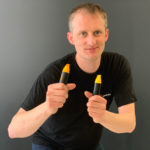







Attending the bikablo® visual facilitation training is only 50% of the deal. You need to apply it and keep practising on your day-to-day job. One of the best ways to improve your visual facilitation skills is by learning from each other in a community of practise. In this short episode I talk about different communities of practise I have been part of in my career and would like to invite you to join the bikablo® graduates group on LinkedIn.
I would like to ask you a question. Are you part of a community of practice? Now, you might wonder, what is he talking about? Okay, let’s look into the words step-by-step and see what a community of practice means.
Are you part of a community? You’re part of a country, which is already a community. You’re part of a family, and you may be part of a work environment.
All those are communities. However, you might not think of it as a place where you learn from each other new techniques, tools or crafts because most communities are diverse and share little in common.
This is different in the community of practice. A community of practice, you meet like-minded people who want to learn the same thing in life and therefore exchange their experience.
You look for people who have achieved something you try to master right now and they act as a mentor for you. At the same time you become a leader for others. This creates a network of people learning and growing together their skill set.
Let me give you an example of a community of practice I was part of. When I first heard about the extreme programming, I was very excited to figure out what this agile approach of delivering software would mean and how I could apply it to my world.
I looked into the extreme programming (XP) community by following online discussions, attending user groups to meet like-minded people. That helped me to explore this new topic I had heart about in the podcast. I learnt from other and probably asked every question you can ask twice.
Same again when I got into visual facilitation. I discovered visual facilitation as an awesome way to interact and collaborate with people. It helps to convey my message across to the people I work with every day.
However, in the beginning it was not the easiest thing to start drawing live on a white board while people looking at your drawing and spelling mistakes. So hearing from other graphic recorders and visual facilitators about their journey helped me to learn and grow.
So why is a community of practice so important? For me this all comes back to our human needs. Let’s have a look at the Maslow’s Hierarchy of Needs. The fundament of that step ladder is safety and the fulfilment of your physiological needs. Like food and shelter. I am quite confident that you have reached that level by the pure fact that you have conditions in life that enable you to listen to this podcast. If you would worry about food and shelter you probably would not have the capacity to think about this podcast.
The next level in the Hierarchy of Needs is love and belonging. Communities of practise help at this point because it provides a group of people who like to do the same things you like and everyone shares their experience. You notice that your challenges are not so different from others and that someone found a solution for your problem already.
Level up on Maslow’s ladder again and we talk about esteem or acknowledgement by others. Esteem gives you the feeling that you are on the right track. I often come home from Meetups and have the feeling that I do well and should progress my path. I also feel good because I could help others on their journey. Some people need more acknowledgement some people less. However, most people need a bit of the good feeling and the comfort that we are on the right track.
The final step in that hierarchy is the self-actualisation. Self-actualization is a tricky one. Some people say they just know what they should do in life and feel like they are called to do it. However for me this is not so clear – I enjoy learning new things and passing them on. For many it is the quest about what you want to do with your life and who you would like to become.
So why am I telling you that? First of all, I believe that coming to my bikablo® visual facilitation training is only 50% of your job. You need to find your community of practise, simply to keep practising and learning from others. If you are from Melbourne or Sydney we have Meetups around visual facilitation. The Melbourne Meetup is hosted by me and you are welcome to learn about visual facilitation even if you haven’t participated in a bikablo® training.”
However, there is more. I’m very proud to present to you a new bikablo® community of practise. It is a closed network for bikablo® graduates that are now practising their visual thinking and facilitation skills on their day-to-day job. The group is hosted on Linkedin and every training attendee from the past got invited.
I believe that those communities are even stronger because you already made some commitment by coming to a bikablo® training. This online community of practice is a community where you find people that are one the same journey. They might have been in the training two-month earlier but we are on the same journey together. On top of that you can ask questions to other bikablo® trainers who hang out with you. The beauty is that each trainer is different. I apply bikablo® is the world of agile coaching and culture change but we have trainers who use bikablo® for process mapping, business consulting or counselling. All bikablo® trainers together have more than 150 years of visual facilitation experience.
If you have participated in a bikablo® training in Europe, Australia or Asia. Please accept my invite to the bikablo® graduates community. If you haven’t been to a bikablo® training just follow the link below and join the bikablo® community of practise tomorrow.
Please remember that the training is just the kick-start. You need to keep the engine running and learn on daily bases.
Thank you very much for listening to bikablo® insight, and I hope to see you in one of the trainings in Sydney, Melbourne or anywhere in Europe.

Marcel combines agile team coaching with visual thinking. Marcel believes that a group of people drawing together on a whiteboard can change the world. He loves high-performing teams and therefore coaches teams every day.

